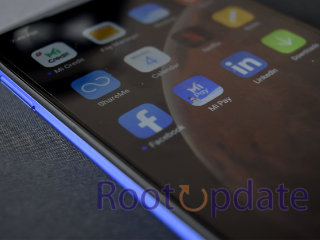How to Debloat Or Remove Bloatware from HyperOS: This guide will show you, step-by-step, how to properly debloat or get rid of bloatware on your Xiaomi device that runs HyperOS. Even though HyperOS claims to improve speed and the user experience, it often comes with a lot of unwanted programs, which is called “bloatware.” Not only do these apps take up valuable storage room, but they also slow down the system over time. Our guide is meant to give you the information and tools you need to take back control of your device and make it work the way you want it to.
Like many other maker skins, Xiaomi’s HyperOS is known for having a lot of extra software. These pre-installed apps are more concerned with the manufacturer’s needs than the end-users’, which can make the experience frustrating and time-consuming. Bloatware, which includes useless work tools and unwanted utility apps, makes it hard for people to set up their devices in a way that is simple and unique.
How to Debloat Or Remove Bloatware from HyperOS



How to Do Deblotation Step by Step
- Step 1: Put in the Android SDK
Before you start the process of debloating, you need to make sure you have the right tools. First, get the Android SDK Platform Tools and put them on your PC. This approved toolkit from Google comes with useful programs like Fastboot and ADB (Android Debug Bridge). To move forward, download the SDK and extract it to a convenient place on your computer. - Step 2: Turn on USB debugging
You need to allow USB Debugging before you can connect your PC to your Xiaomi device. To get to Developer Options, go to Settings > About Phone and tap on Build Number seven times. Then, go to Settings > System > Advanced > Developer Options and turn on USB Debugging. - Step 3: Check the ADB connection
Make sure USB Debugging is turned on before you connect your Xiaomi device to your PC using a USB wire. To check the ADB link, open the platform-tools folder on your PC, start Command Prompt, and type the command adb devices. If your gadget is successfully detected, you are ready to move on. - Step 4: Look up the name of the app package
Find the package name of the app that you want to get rid of. You can list installed apps with pm list packages, system apps with pm list packages -s, or Google apps with pm list packages google. You can also use third-party apps like App Package Viewer or run tools like pm list packages. - Step 5: Get rid of bloatware
To get rid of the unwanted app, run the command pm uninstall –user 0 package.name.example. Change the name of the app’s package to package.name.example. You can keep app data if you want to by using pm uninstall -k –user 0 package.name.example.
Related:
- How to Go Back to MIUI from HyperOS Xiaomi EU
- How to Fix Android 14 QPR3 Beta 2 Bricked Pixel Devices
- How to Fix Cannot Install Windows Update KB5001716
- How to Fix System Software from Application was Blocked on Mac
- How to remove Apple TV control from iPhone Lock Screen
Conclusion
By following these detailed steps, you can successfully debloat, or get rid of, unnecessary apps on your Xiaomi device running HyperOS. This will improve performance and free up valuable storage space. You can have a smooth and customized user experience if you take charge of your device’s software environment and make it fit your needs.
